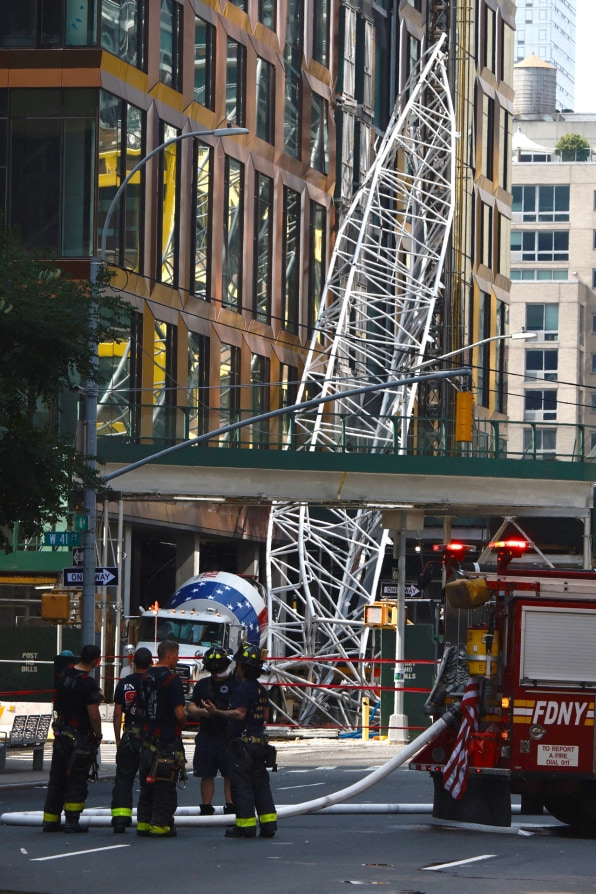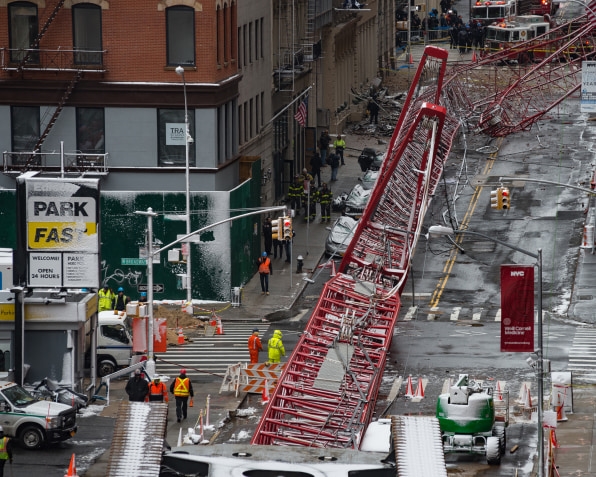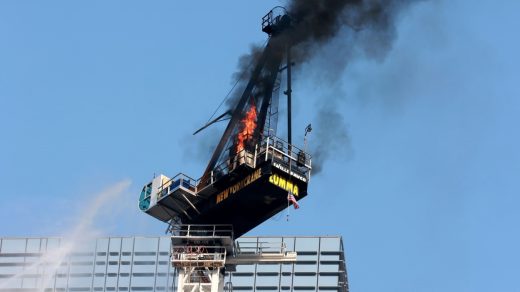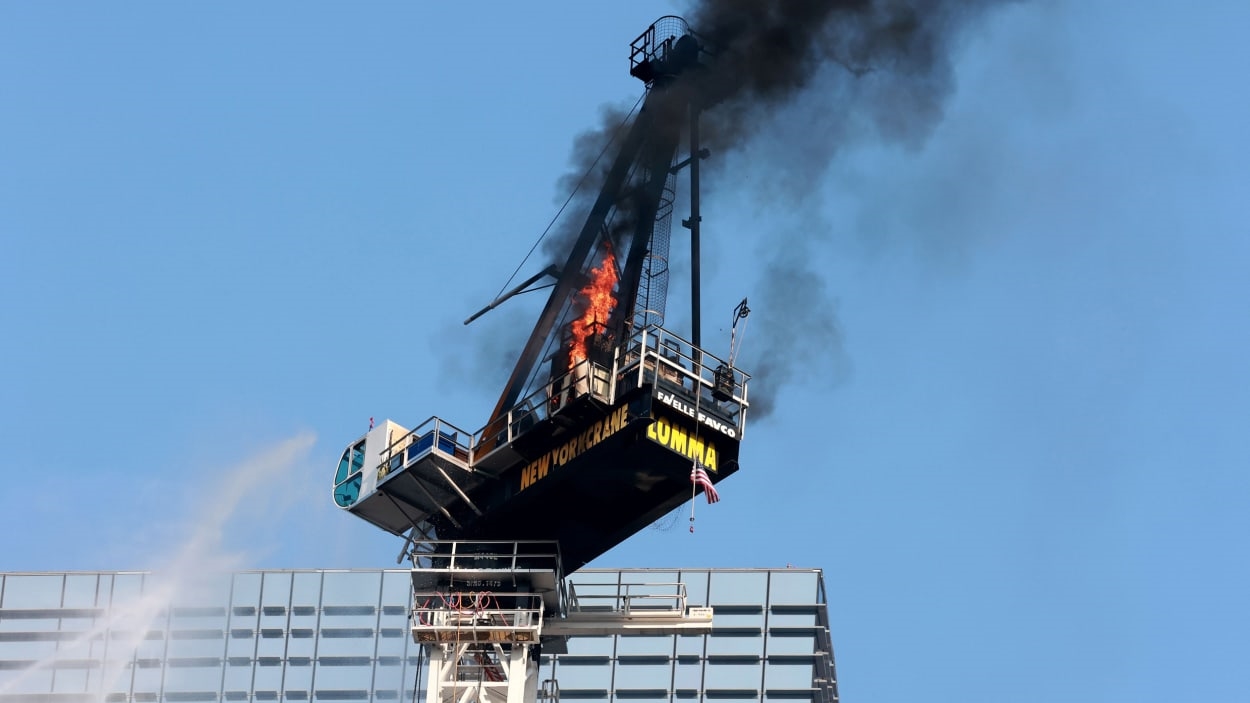Crane accidents are shockingly common. Here’s why they happen
When a fire broke out in the suspended operator’s cab of a massive construction crane in New York City early Wednesday, it didn’t take long for the structure, which was 45 stories high, to come crashing down. Within minutes, the top of the crane’s boom arm careened over like a falling tree, slamming its tip into the top of a building across the street before swinging down and crashing into the side of the building it had been constructing. Debris was sent hurtling to the ground. Four civilians and two firefighters were injured.

According to construction experts, the causes of many crane collapses range from improper assembly and installation to operator error to unexpected weather. Improper installation is often the main culprit, but not the only cause.
A global study found that there were 872 tower crane accidents or collapses between 2000 and 2009 causing at least 668 deaths. More than a quarter of those accidents occurred due to errors during crane assembly or disassembly. Another quarter of collapses occurred during operation or lifting. Only 10% of those accidents were directly blamed on weather. More recent data, reported by the Bureau of Labor Statistics, found that from 2011 to 2015, there were an average of 44 crane-related deaths every year in the U.S. alone.

Cranes are often anchored to the buildings on which they’re being used, in addition to being heavily weighed down at the ground level. This allows cranes to carry massive amounts of weight up hundreds of feet for use in building towering skyscrapers. Overloading has caused many cranes to collapse, but was not at fault in Wednesday’s accident. At the time the fire broke out, the crane was carrying roughly 16 tons of concrete. Tower cranes like this one can typically carry more than 20 tons per lift. While the cause of the fire is still unknown, it rapidly compromised the crane’s structure and caused the collapse.
Because of a crane’s size and often puzzle-like placement within high density urban environments, when they collapse the resulting damage can injure or even kill workers, first responders, and bystanders. In May, four people were injured when a crane used in building an apartment complex in midtown Atlanta collapsed. In March, a worker was killed when a truck-mounted crane toppled at a school construction site outside of Dallas. In 2019, a crane involved in a Google construction project in Seattle collapsed under high winds as it was being disassembled, killing four people. In 2016, another crane collapsed in Manhattan during 20 mile-per-hour winds, killing one pedestrian and injuring three other people. The crane was found to be inadequately secured.
This most recent crane collapse was, by some measures, a fortunate one. Despite the large amount of concrete being hoisted and the heavy pieces of the crane’s structure that fell to the ground, the injuries sustained during Wednesday’s collapse were minimal, according to Joseph W. Pfeifer, deputy commissioner of New York City’s Fire Department. “This could have been a lot worse,” he said during a news conference.
(8)



